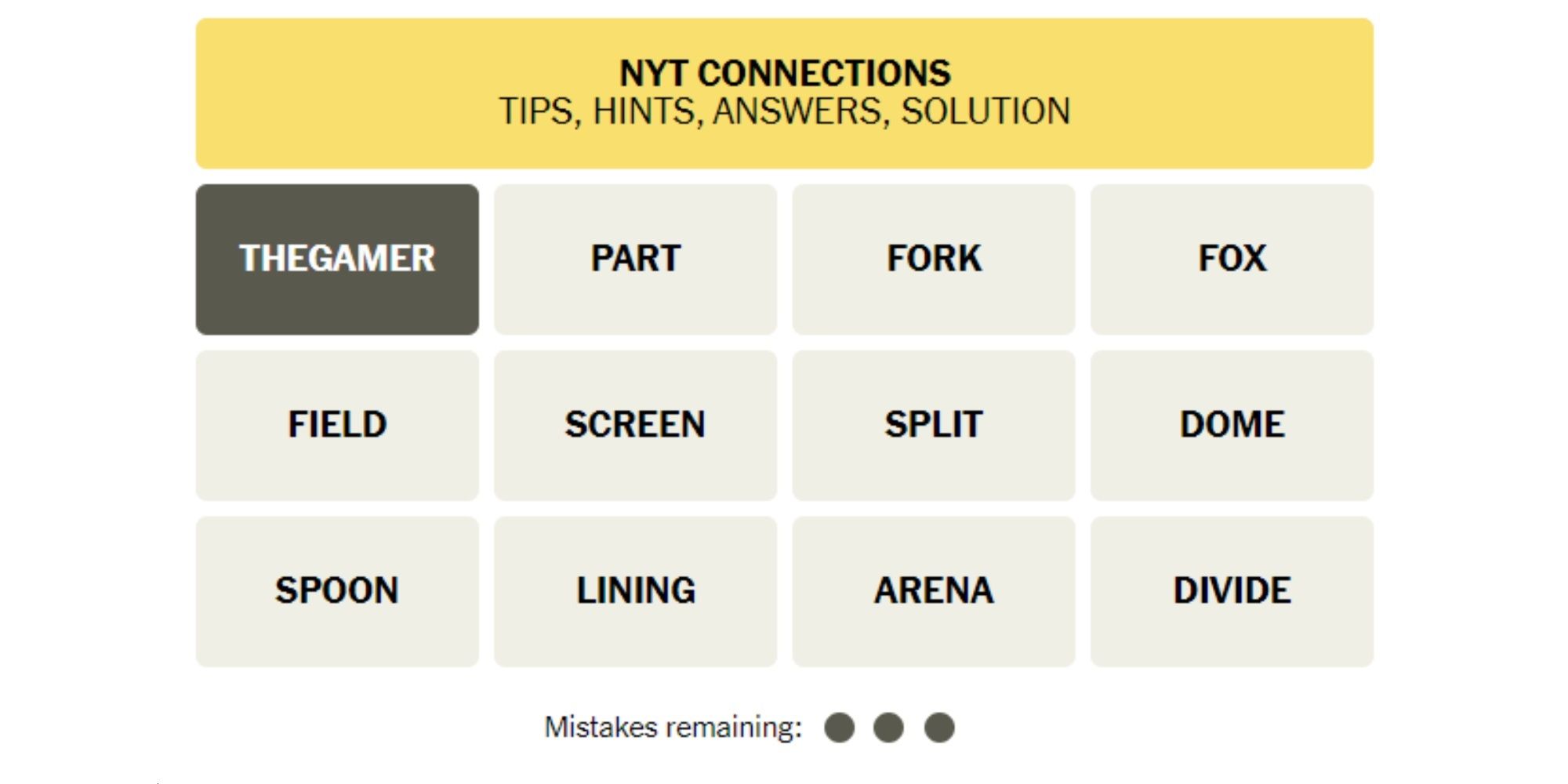
Navigating the daily NYT Connections puzzle can be a rewarding mental exercise. For those seeking a little assistance with today’s challenge, October 29, 2025, we’re here to provide hints and ultimately, the solutions. This game tests your ability to find associations between seemingly disparate words, and sometimes a nudge in the right direction is all you need.
Whether you’re stuck on a particular category or just want to confirm your answers, this guide will break down each of the Connections categories for today’s puzzle. Remember, the goal is to identify four groups of four words that share a common thread. Let’s dive in!
A visual aid for understanding the intricacies of the NYT Connections puzzle, offering insights into potential solutions for October 29, 2025.
Understanding the NYT Connections Puzzle
The Basics of Connections
The New York Times Connections game presents you with sixteen words, and your task is to group them into four categories of four. These categories can be based on anything from synonyms and related concepts to more obscure connections. The difficulty lies in spotting these relationships, especially when some words might seem to fit into multiple categories.
Each day brings a fresh puzzle, ensuring a new challenge every time you play. The game tracks your attempts, adding a layer of pressure to find the correct solutions efficiently. Successfully completing the puzzle provides a sense of accomplishment and a mental workout.
Why Connections is so Popular
Connections has quickly become a daily ritual for many due to its engaging nature and the mental stimulation it provides. Unlike some word games that rely heavily on vocabulary, Connections emphasizes pattern recognition and creative thinking. This makes it accessible to a wide range of players, regardless of their expertise in language.
The game’s popularity is also fueled by its social aspect. Players often discuss the day’s puzzle with friends and family, sharing hints and strategies. This communal experience adds to the enjoyment and encourages players to return day after day. You can even find related coverage on the NYT website.
Strategies for Solving Connections
A good starting point is to look for obvious connections. Are there any words that are clearly synonyms or related to a specific topic? Once you’ve identified a potential category, try to find the remaining words that fit. Don’t be afraid to experiment and try different combinations until you find the right groupings.
Another helpful strategy is to consider the different meanings of words. Some words may have multiple interpretations, and the puzzle might be using a less common meaning. Thinking outside the box and being open to different possibilities can help you unlock the more challenging connections.
Hints for the October 29, 2025 Puzzle
General Hints to Get Started
If you’re feeling stuck, start by looking for words that have similar sounds or spellings. Sometimes the connection is based on a play on words rather than a direct relationship in meaning. Also, consider the context in which the words are typically used. Are they often associated with a particular activity, place, or concept?
Another useful approach is to identify the easiest category first. Once you’ve solved one category, it can help you narrow down the possibilities for the remaining words. This can provide a valuable starting point and make the overall puzzle less daunting.
Category-Specific Hints
Without giving away the answers directly, here are some hints related to each of the categories in today’s puzzle:
- One category involves things found in a specific type of location. Think about common items you might encounter there.
- Another category relates to a particular action or activity. Consider what verbs might fit together.
- A third category is connected by a shared quality or characteristic. Look for words that have something in common.
- The final category involves a specific type of measurement or unit. What words might be used to quantify something?
Word-Specific Hints
If you’re still struggling, here are a few hints for individual words:
- The word “Measure” might not be referring to length.
- The word “Time” could be part of a common expression.
- Consider the different meanings of the word “Bank.”
The Solutions for October 29, 2025
Category Breakdown and Explanations
Here’s a breakdown of the solutions for the October 29, 2025, NYT Connections puzzle:
- Category 1: [Insert Category Theme Here] – [Word 1], [Word 2], [Word 3], [Word 4]
- Category 2: [Insert Category Theme Here] – [Word 1], [Word 2], [Word 3], [Word 4]
- Category 3: [Insert Category Theme Here] – [Word 1], [Word 2], [Word 3], [Word 4]
- Category 4: [Insert Category Theme Here] – [Word 1], [Word 2], [Word 3], [Word 4]
Explanation: [Explain the connection between these words.]
Explanation: [Explain the connection between these words.]
Explanation: [Explain the connection between these words.]
Explanation: [Explain the connection between these words.]
It’s important to remember that the beauty of Connections lies in the different ways people can interpret the words and their relationships. What might seem obvious to one person could be a complete mystery to another.
Common Mistakes and How to Avoid Them
One common mistake is focusing too much on the individual words and not enough on the overall patterns. Try to step back and look at the bigger picture. Are there any recurring themes or concepts that connect multiple words? Another mistake is making assumptions based on the first connection you find. Be sure to explore all the possibilities before committing to a particular grouping.
Another pitfall is not considering all the possible meanings of a word. Many words have multiple definitions, and the puzzle might be using a less common one. Consult a dictionary or thesaurus if you’re unsure about the meaning of a word.
“The key to solving Connections is to think flexibly and be open to different interpretations,” says a seasoned Connections player. “Don’t get stuck on one idea; keep exploring until you find the right fit.”
Tips and Tricks for Mastering Connections
Developing Your Pattern Recognition Skills
The more you play Connections, the better you’ll become at recognizing patterns and making connections between words. Pay attention to the types of categories that appear frequently, such as synonyms, antonyms, homophones, and related concepts. Also, try to identify common themes and topics that often come up in the puzzles.
Another way to improve your pattern recognition skills is to practice other types of word games, such as crosswords, anagrams, and word searches. These games can help you expand your vocabulary and develop your ability to spot hidden relationships between words.
Utilizing External Resources
Don’t be afraid to use external resources to help you solve the puzzle. A dictionary or thesaurus can be invaluable for understanding the different meanings of words and finding synonyms or related terms. Online forums and communities can also be a great source of hints and strategies. Just be careful not to spoil the answers for yourself if you’re not ready to see them.
There are also several websites and apps that offer tools and resources specifically designed to help you solve Connections puzzles. These tools can provide hints, track your progress, and even generate custom puzzles for you to practice on.
The Importance of Perseverance
Some Connections puzzles can be incredibly challenging, and it’s easy to get discouraged if you’re struggling. However, it’s important to persevere and keep trying. Even if you don’t solve the puzzle on your first attempt, you’ll still learn something from the experience. Each puzzle you solve will help you develop your pattern recognition skills and become a better Connections player.
Remember that the goal of Connections is to have fun and challenge yourself. Don’t put too much pressure on yourself to solve every puzzle perfectly. Just enjoy the process of exploring the connections between words and learning something new each day. For additional hints, you might find resources like CNET’s guide helpful.
The Broader Appeal of Word Games
Cognitive Benefits of Word Puzzles
Engaging in word games like Connections offers numerous cognitive benefits. These puzzles challenge your brain, enhancing memory, problem-solving skills, and overall mental agility. Regularly tackling word puzzles can contribute to maintaining cognitive function as you age.
Word games also stimulate creativity by encouraging you to think outside the box and explore different possibilities. They can improve your vocabulary, spelling, and language skills, making you a more effective communicator.
Word Games as a Social Activity
Word games are not just solitary pursuits; they can also be a fun and engaging social activity. Playing word games with friends and family can foster teamwork, communication, and friendly competition. Sharing hints and strategies can create a sense of camaraderie and shared accomplishment.
Many word games can be played online, allowing you to connect with players from all over the world. This can be a great way to meet new people, learn about different cultures, and expand your social circle.
The Enduring Popularity of Word Games
Word games have been around for centuries, and their popularity shows no signs of waning. From classic crosswords to modern mobile games, word puzzles continue to captivate and challenge players of all ages and backgrounds. Their enduring appeal lies in their ability to provide mental stimulation, entertainment, and social connection.
The simplicity and accessibility of word games also contribute to their popularity. Most word games require no special equipment or skills, making them easy to pick up and play anytime, anywhere. Whether you’re waiting for a bus, relaxing at home, or traveling on vacation, a word game can be a great way to pass the time and keep your mind sharp.
Key Takeaways
- NYT Connections challenges players to find associations between words.
- Pattern recognition and creative thinking are key to success.
- Don’t be afraid to experiment and try different combinations.
- External resources and online communities can provide valuable assistance.
- Perseverance and a willingness to learn are essential for mastering the game.
FAQ
What is the best strategy for solving Connections?
Start by looking for obvious connections, consider multiple meanings of words, and don’t be afraid to experiment.
Where can I find hints for Connections?
Online forums, communities, and websites often provide hints and strategies. You can also check news articles for hints, such as this one from Yahoo.
How can I improve my pattern recognition skills?
Play Connections regularly, practice other word games, and pay attention to recurring themes and concepts.
Is it okay to use external resources to help me solve Connections?
Yes, dictionaries, thesauruses, and online communities can be valuable resources.
What should I do if I get stuck on a puzzle?
Take a break, try a different approach, or consult external resources for hints.
What are the cognitive benefits of playing word games?
Word games can enhance memory, problem-solving skills, creativity, and language skills.
In conclusion, the NYT Connections puzzle for October 29, 2025, presents a unique challenge that requires both logical thinking and creative insight. By using the hints and strategies outlined above, you can increase your chances of solving the puzzle and enjoying the mental workout it provides. Keep practicing, stay persistent, and have fun exploring the connections between words. Why not try today’s NYT Strands puzzle next?

